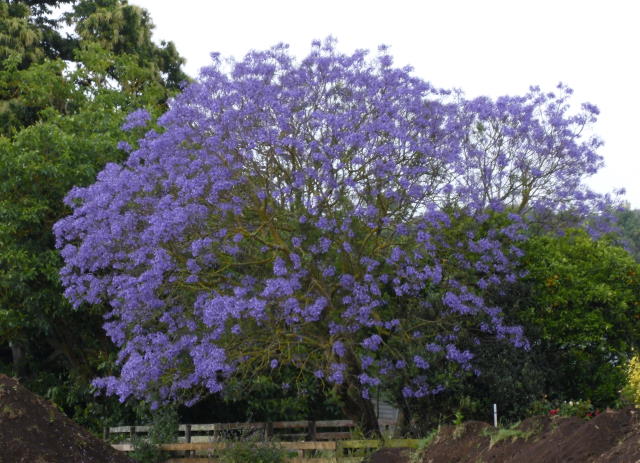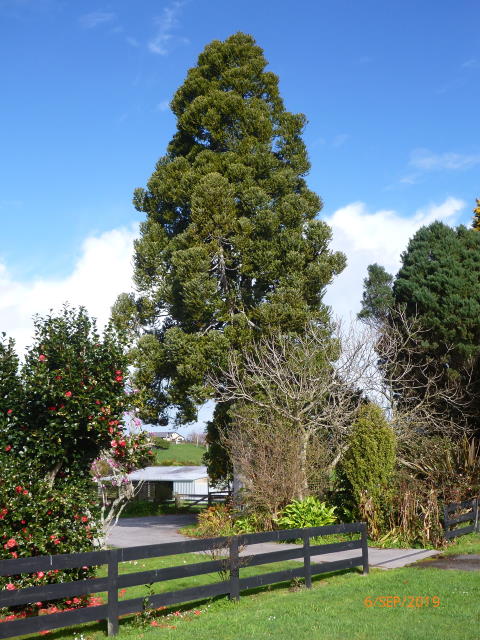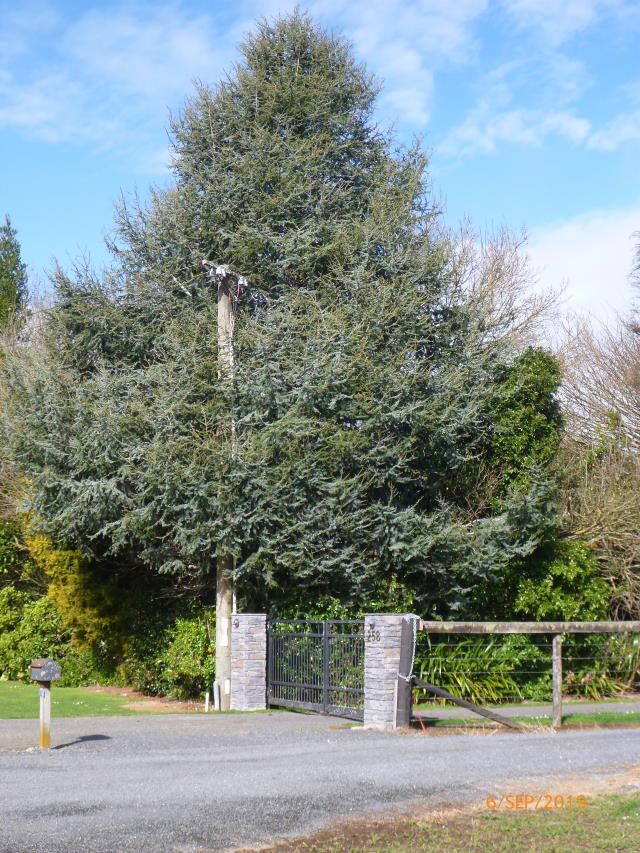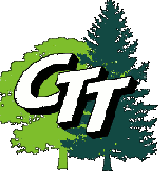Notable trees
Albizzia julibrissin

This is an elegant and graceful shade tree, which deserves to be in much greater use as a street and garden tree. Its natural umbrella shape and soft foliage provide a cooling canopy of dappled shade. It is drought and frost tolerant, grows only to about eight metres high, and although it is deciduous the leaves are soft and create little mess. Besides, it is late coming into leaf and looses its leaves early in autumn. It is very decorative in January and February when it is covered in masses of pink powder-puff flowers, providing nectar for birds and bees. The flowers are very small, occurring in bundles, with the stamens much longer and more showy than the petals. These then give way to small, flat seed pods. So instead of buying a shade umbrella for the back garden, plant a silk tree and prune off the lower branches to give you summer shade, cooling transpiration and beauty.
The silk tree is a member of a genus of about 150 tropical and subtropical trees which are found in Australia, Asia, Africa and the Americas. It is named after Filippo degli Albizzi, the Italian who first introduced it from Persia (Iran) to Europe in the mid-eighteenth century. Besides their ornamental value, some species of Albizzia are used for timber, for their antibacterial properties, and in semi-arid regions as a forage crop.

Jacaranda mimosifolia
Also known as the fern tree, the graceful and spectacular jacaranda is a native of Bolivia, Argentina and Brazil, and one of their most beautiful exports. In Sydney, Perth, Pretoria, Lisbon, and in Pakistan and the Caribbean jacarandas lift the spirits; planted with gay abandon they create an amethyst canopy of fragrant flowers over suburban streets, and lay a purple carpet beneath, while the delicate emergent foliage castes a welcome summer shade. A great investment as a street tree not only for their beauty but also their contribution to air cleaning, urban cooling, and community mental health.
Jacaranda is a member of the bignonia family, which includes catalpa and paulonia. Grown in well-drained soil in full sun and frost free, it can reach 20 metres in height. It is deciduous, and may bloom twice a year. Despite the beauty of its flowers all parts of the tree are poisonous, ‘causing vomiting, diarrhoea, irregular heart beat, dilated pupils, coma and death’. The pale wood, when still green, is used for turnery and bowl making. Extracts of jacaranda also have antimicrobial properties against E. coli and Staphylococcus aureus.
In folklore the jacaranda is associated with wisdom, rebirth, wealth and good luck. If its flower falls on your head it is thought to bring good fortune. In Queensland late spring is known as the ‘Purple panic’, the time when the jacaranda flowers and students are stressed out completing assignments and preparing for final exams. However in Pretoria it is said that if the flowers fall on your head it means you will pass your exams!


New South Wales Christmas Bush (Ceratopetalum gummiferum)
Growing in a garden in Hamilton Road, this small tree had me mystified. Tolerant of -2 degrees of frost, it is a native of Papua New Guinea and eastern Australia, where it grows to 12 metres in height – so not really a bush. It is usually found growing in sandstone or old sand dunes, as it enjoys a well-drained soil. It was first described to the western world by the English botanist, James Edward Smith in A Specimen of the Botany of New Holland (1793). The leaves are tri-foliate, each leaflet being about 5-8 cm long and 0.5 cm wide. In late spring it is covered in sprays of tiny, white, five-petalled flowers (some of which can be seen in the photo), but these often go unnoticed until they begin to die and the sepals then enlarge and become pink in colour. This display peaks at Christmas in Australia, perhaps a little later in New Zealand. These pink sprays will last in water for weeks.
The leaves contain aesculin, a coumarin glucoside (also found in certain chestnut trees) which is sometimes used in the treatment of lupus, and also as an ultra-violet radiation screen in suntan lotion. It is used as a fragrance in some skin care and bath products, with a scent reminiscent of freshly-mown hay.
Fraxinus angustifolia is a deciduous Tree growing to 25 m (82ft) by 12 m (39ft).
It is hardy to zone (UK) 6 and is not frost tender. It is in flower from April to May. The species is hermaphrodite (has both male and female organs) and is pollinated by Wind.
Suitable for: light (sandy), medium (loamy) and heavy (clay) soils. Suitable pH: acid, neutral and basic (alkaline) soils and can grow in very alkaline soils. It cannot grow in the shade. It prefers dry or moist soil. The plant can tolerates strong winds but not maritime exposure. It can tolerate atmospheric pollution.

Kauri (Agathis australis) provides an impressive sense of scale in this Maungakawa garden.
Members of the Araucariaceae family (think monkey puzzle and Norfolk pine), kauri have an incredibly ancient lineage of hundreds of millions of years. The growth rings of fossilised trees preserved in Northland bogs provide scientists with thousands of years of detailed climatic history, allowing analysis of annual changes in atmospheric humidity, vapour pressure and carbon.
Kauri has been valued both for its timber and its resin. Maori harvested it for prestige items such as grand waka, while the British navy valued the tall straight trunks as masts; it is said that when Lord Nelson defeated Napoleon at the Battle of Trafalgar, his ship was fitted with kauri masts. Many of our oldest historic buildings are made of kauri. The resin was used by Maori as a fire-starter and making torches for night fishing; the resulting soot was then mixed with oils for tattooing. Europeans used Kauri gum to make varnish, and in the latter half of the nineteenth century it was a more valuable export than timber, wool or gold.
Some Northern Maori thought of the kauri as the legs of Tāne Mahuta, holding sky and earth apart. In other traditions this giant of the forest is connected to the giant of the ocean, the sperm whale, parāoa, both sons of Tāne Mahuta. When Parāoa failed to persuade Kauri to join him in the ocean, he suggested that they swap skins, saying, ‘One day men will cut you down and make you into waka, and with my skin you will be able to withstand the salty seas.’ This explains why the bark of kauri is thin and oozes resin like the ambergris of the sperm whale. (Vennell, Meaning of Trees)

Blue Atlas Cedar (Cedrus atlantica glauca)
The name cedar is often used for any tree with dark, spicy-scented wood. In Japan there is the plume cedar (Cryptomeria), in North America the incense cedar (Calocedrus), Western cedar (Thuja) and Eastern cedar (Chaemocyparis). But the true cedars, distinguished by their majestic architecture, are only four in number and three of these are found around the Mediterranean. Similar in appearance to the cedars of Lebanon, Cedrus atlantica is a native of the Atlas Mountains of Morocco, tolerating hot dry conditions. Global warming has prompted a search for forest species that will thrive in central Europe and indications are that the Atlas cedar may be most suitable. Its blue form remains a popular garden tree, though not really suitable for a small space due to its colossal spread when mature. Hugh Johnson describes seeing ‘their desperate pale-blue gestures over every little garden wall in some parts of France’.
I remember fondly the blue cedar that grew in the admittedly-large garden of my childhood. At Christmas we decorated it head to foot with handmade streamers, stars and bells, but by the time I arrived at adulthood it was almost out of reach, so only a few of the lower branches could be festooned with tinsel and baubles. Nowadays at 45m high its days as a Christmas tree are over.
The wood of the Atlantic cedar is pale brown with well-defined growth rings. It is durable and notable for its resistance to fungi and termites, but because it tends to distort when drying and may be brittle, it is not particularly good for building. However it is easy to work and takes a fine finish, so is popular for joinery, furniture and veneer.
The Cambridge Tree Trust was registered with the Charities Commission as a Charitable Entity under the Charities Act 2005 on 16 August 2007. Registration No: CC10859


